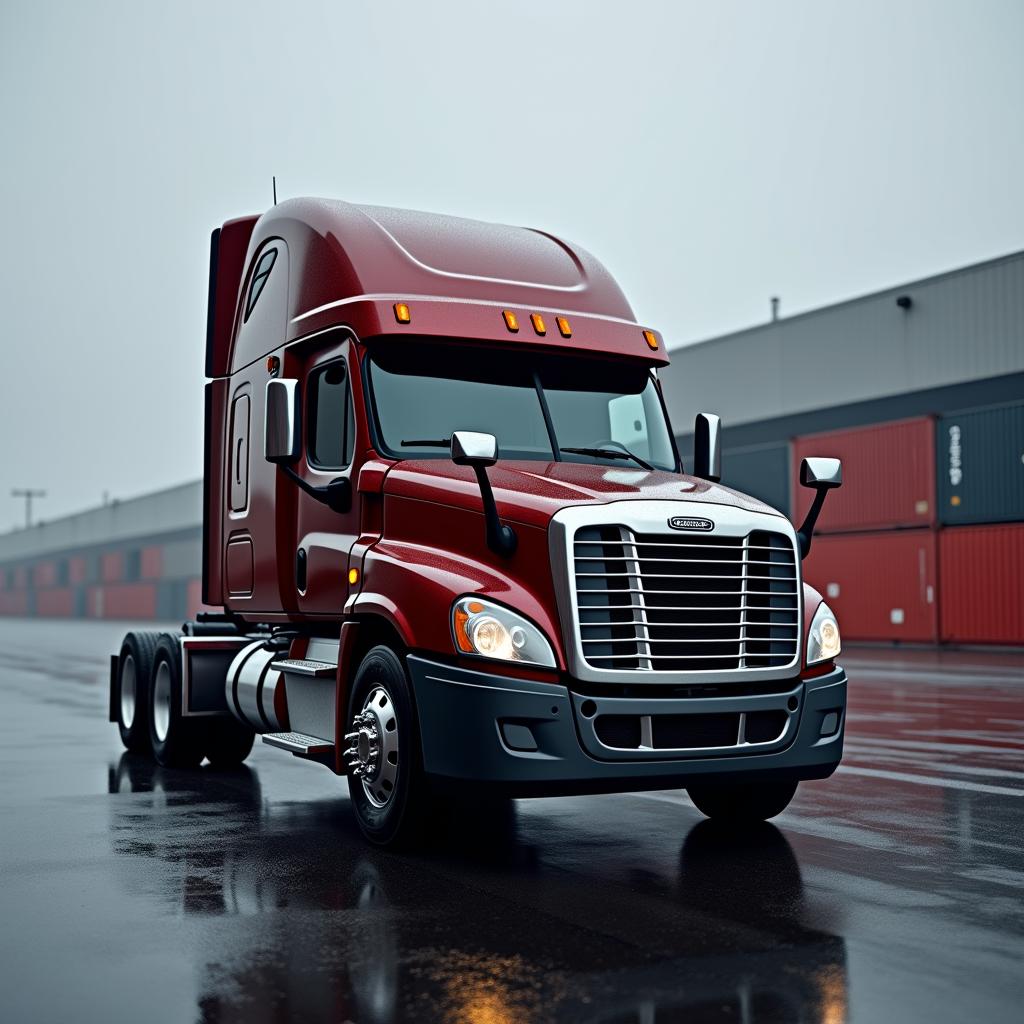The road to parenthood is an exciting journey, but for truck drivers, it can present unique challenges when balancing professional responsibilities with family life. With the trucking industry employing over 3.5 million drivers in the United States, understanding trucker parental leave options has never been more important. The demanding nature of long-haul driving combined with the critical need for bonding time with a new child creates a complex situation that requires careful navigation. This comprehensive guide explores everything truck drivers need to know about parental leave policies, rights, and strategies to make the most of this precious time while protecting their careers.
Understanding Trucker Parental Leave: The Current Landscape
The trucking industry has historically lagged behind other sectors when it comes to comprehensive parental leave policies. While many corporate employees might enjoy generous family leave benefits, truck drivers—especially independent contractors—often face a different reality. The commercial truck driver parental benefits landscape varies dramatically depending on employment status, company size, and state regulations.
According to the Department of Labor, the Family and Medical Leave Act (FMLA) provides eligible employees with up to 12 weeks of unpaid, job-protected leave per year for specified family and medical reasons, including the birth or adoption of a child. However, to qualify, drivers must:
- Work for a covered employer (with 50+ employees)
- Have worked for that employer for at least 12 months
- Have logged at least 1,250 hours during the 12 months prior to leave
- Work at a location where the employer has at least 50 employees within 75 miles
These requirements often exclude many truck drivers, particularly owner-operators and those working for smaller carriers. The result is a significant gap in parental leave coverage across the industry, leaving many truckers to cobble together their own solutions when welcoming a new child.
The Importance of Parental Leave for Truck Drivers
Parental leave isn’t just a nice perk—it’s an essential component of family well-being and driver retention in the trucking industry. Research consistently shows that adequate trucker parental leave delivers benefits that extend far beyond the immediate family unit:
Health Benefits
For new parents who drive trucks, taking time away from the road provides crucial physical recovery time (particularly for birth parents) and helps establish healthy sleep patterns despite the challenging nature of infant care. Mental health benefits are equally significant, as adequate leave time reduces the risk of postpartum depression and anxiety that can be exacerbated by the isolation of long-haul trucking.
Family Bonding
The early weeks and months of a child’s life represent a critical bonding period. For truckers who may routinely spend days or weeks away from home, this initial connection time becomes even more precious. Establishing this foundation can help mitigate the challenges of maintaining family relationships during future long hauls.
Driver Retention
Carriers facing severe driver shortages are beginning to recognize that family-friendly trucking company policies represent a powerful recruitment and retention tool. According to industry surveys, drivers consistently rank work-life balance among their top concerns, often above compensation. Companies offering meaningful parental leave policies gain a competitive advantage in attracting and keeping quality drivers.
As one fleet manager noted in a recent industry publication: “We’ve seen our turnover rate drop by 15% since implementing a more generous parental leave policy. The math is simple—it costs less to support a driver through parenthood than to recruit and train a replacement.”
Navigating FMLA and State Laws for Truck Drivers
While FMLA provides the federal baseline for parental leave, truck drivers should be aware that state laws may offer additional protections. Understanding the interplay between federal and state regulations is crucial for maximizing available benefits.
FMLA Eligibility for Truckers
The FMLA’s requirement of 1,250 work hours in the previous 12 months generally translates to about 31 weeks of full-time work. For truckers whose hours are carefully logged due to Hours of Service regulations, proving this threshold is straightforward—but meeting it can be challenging for drivers who face seasonal work or irregular schedules.
It’s important to note that FMLA protects your job but doesn’t require paid leave. This creates financial strain for many driver families already operating on tight margins.
State-Specific Parental Leave Laws
Several states have enacted more generous parental leave laws that may benefit truck drivers. For example:
- California: The Paid Family Leave (PFL) program provides up to eight weeks of partial wage replacement
- New York: Offers up to 12 weeks of paid family leave at 67% of average weekly wage
- Washington: Provides up to 12 weeks of paid leave for new parents
- Massachusetts: Offers up to 12 weeks of paid family leave
Truckers should research their state’s specific provisions, as domicile state (where you live) may matter more than the state where your carrier is headquartered. The National Conference of State Legislatures maintains an updated database of state family leave laws that can serve as a starting point.
Special Considerations for Owner-Operators
Independent owner-operators face unique challenges since they don’t qualify for FMLA protections. These drivers must create their own parental leave strategies, which might include:
- Building a financial cushion to self-fund leave time
- Investigating private short-term disability insurance options
- Planning loads and routes strategically in the months surrounding the birth/adoption
- Developing relationships with trusted substitute drivers who can temporarily handle contracted routes
Many owner-operators report that advance planning—often 6-12 months before the expected arrival of a child—is essential for creating a sustainable parental leave strategy.
Company-Specific Trucker Parental Leave Policies
The variance in trucker parental leave policies across carriers is substantial. Forward-thinking companies are beginning to recognize parental leave as a competitive advantage in recruitment and retention efforts, leading to some notable industry examples:
Large Carriers With Progressive Policies
Some of the industry’s largest carriers have begun implementing more family-friendly policies:
- Exemplary Carrier A: Offers 4 weeks of paid parental leave for all drivers with 6+ months of employment, regardless of gender
- Exemplary Carrier B: Provides birth mothers with 6 weeks of paid medical leave plus an additional 2 weeks of bonding time; partners/adoptive parents receive 2 weeks paid leave
- Exemplary Carrier C: Offers graduated leave time based on tenure, with long-term drivers eligible for up to 8 weeks partially paid leave
These policies often come with flexible return-to-work options, such as temporary regional routes that minimize overnight stays during a child’s first year.
Questions to Ask Potential Employers
When evaluating carriers through the lens of family-friendliness, consider asking:
- What specific parental leave policies exist beyond FMLA requirements?
- Is any portion of parental leave paid? At what percentage of normal compensation?
- Are there tenure requirements before becoming eligible for company-specific benefits?
- How does the company handle route assignments for returning parents?
- Does the company offer any childcare assistance or resources?
- What accommodations exist for nursing mothers who need to pump while on the road?
These questions not only provide practical information but also gauge a company’s overall attitude toward work-life balance for driving professionals.
Planning Your Trucker Parental Leave: Practical Strategies
Successfully navigating long-haul driver family leave requires careful planning, clear communication, and knowledge of your rights. Here’s a roadmap for making the most of your parental leave:
Timeline for Preparation
An ideal parental leave planning timeline for truck drivers might look like this:
- 6-12 months before: Research company policies, state laws, and financial implications
- 4-6 months before: Have initial conversations with dispatchers/supervisors
- 3 months before: Submit formal leave request documentation
- 1-2 months before: Finalize handoff plans for routes and responsibilities
- 2-4 weeks before due date: For birth parents, consider transitioning to regional routes if possible
Financial Planning for Unpaid Leave
With many truckers facing the reality of unpaid leave, financial planning becomes crucial. Consider these approaches:
- Create a dedicated “baby fund” with 3-6 months of essential expenses
- Investigate short-term disability insurance options (must be purchased before pregnancy)
- Research whether your state offers any paid family leave programs
- Consider scheduling higher-paying or more frequent loads in the months leading up to leave
- Explore temporary part-time work options during leave that allow you to be home
Communicating with Dispatchers and Carriers
Clear, professional communication about your parental leave plans can make a significant difference in how smoothly the process unfolds:
- Document all conversations about leave plans
- Frame discussions in terms of your value to the company and intention to return
- Be clear about tentative dates while acknowledging the unpredictable nature of childbirth
- Propose solutions for covering your routes/responsibilities
- Know your legal rights under FMLA and state laws before negotiations begin
Remember that while some dispatchers may initially focus on operational challenges, approaching the conversation with proposed solutions often leads to more productive outcomes.
Returning to the Road: Transitioning Back After Parental Leave
The transition back to trucking after welcoming a new child presents both emotional and logistical challenges. Planning this phase is just as important as arranging the leave itself.
Gradual Return Options
Some carriers offer flexible return-to-work options that can ease the transition:
- Shorter routes initially with gradually increasing distances
- Regional assignments that minimize nights away from home
- Part-time driving schedules (particularly beneficial for team drivers where partners can alternate)
- Temporary dedicated routes with predictable home time
Even if your carrier doesn’t formally offer these options, presenting a structured return plan may open doors to accommodation.
Managing Family Life as a Trucker Parent
Balancing life on the road with new parenthood requires intentional strategies:
- Leverage technology for daily video calls to maintain connection
- Create special rituals for days at home that become meaningful traditions
- Consider team driving with your partner if feasible for your family
- Build a strong support network for your at-home partner
- Schedule important milestones and doctor appointments during your home time
Many experienced trucker parents emphasize that quality of time often matters more than quantity, with some reporting that their dedicated home time involves more focused parenting than many 9-to-5 workers achieve.
Advocating for Industry-Wide Change
Individual truckers can play an important role in improving trucker parental leave policies industry-wide:
- Share positive company policies in industry forums and social media
- Participate in driver surveys and feedback opportunities
- Consider parental leave policies when choosing employers and make your priorities known
- Support industry organizations advocating for family-friendly policies
As more drivers prioritize work-life balance, carriers competing for talent will increasingly respond with more supportive policies.
Conclusion: Navigating the Road to Parenthood as a Truck Driver
Trucker parental leave represents a critical intersection of work and family life for America’s 3.5 million professional drivers. While the industry has historically offered limited support for new parents, growing recognition of the importance of work-life balance is slowly changing the landscape. By understanding your rights under FMLA and state laws, researching company-specific policies, planning financially for leave time, and advocating for your needs as a parent, you can successfully navigate this important life transition.
The road to parenthood may have its bumps, but with proper planning, clear communication, and knowledge of your options, truck drivers can create meaningful bonding time with new children while protecting their careers and financial stability. The strategies outlined in this guide provide a roadmap for making the most of available commercial truck driver parental benefits while contributing to positive industry-wide change.
Ready to find a carrier with family-friendly policies that support your journey as both a professional driver and a parent? Submit our consultation form today to work with our team of industry experts who can match you with companies offering the best trucker parental leave policies for your specific situation. Your career shouldn’t come at the expense of your family—let us help you find the right balance on and off the road.







